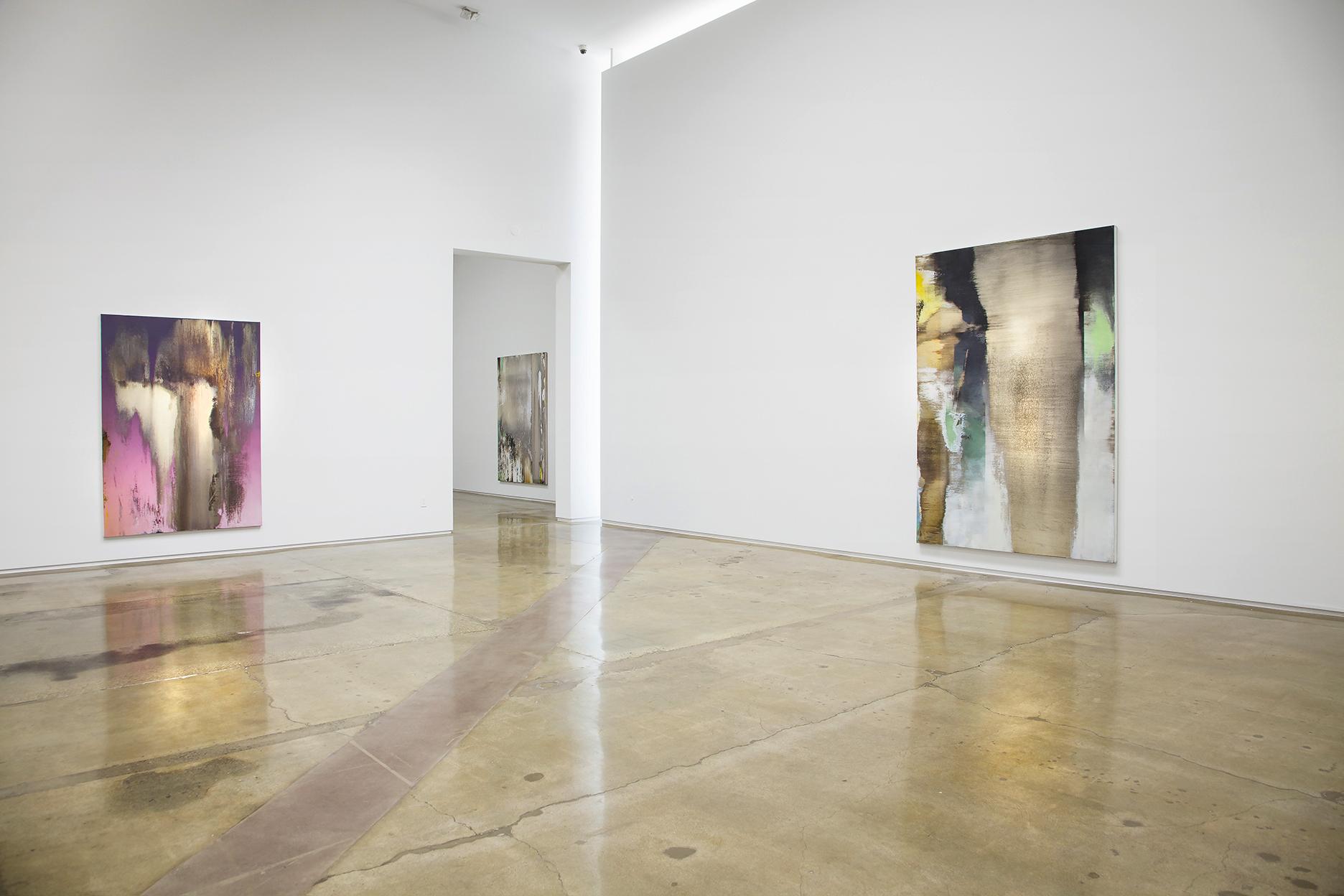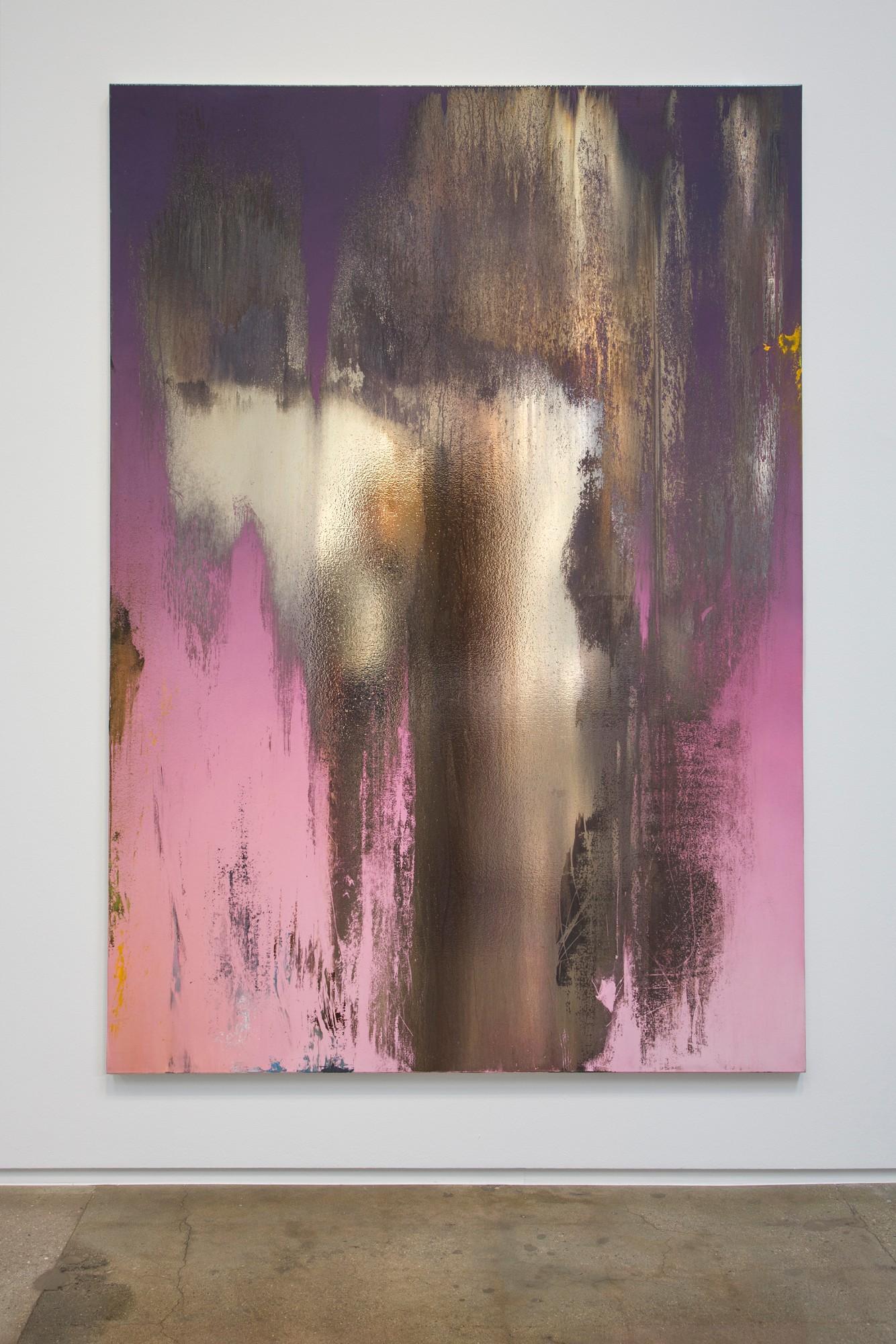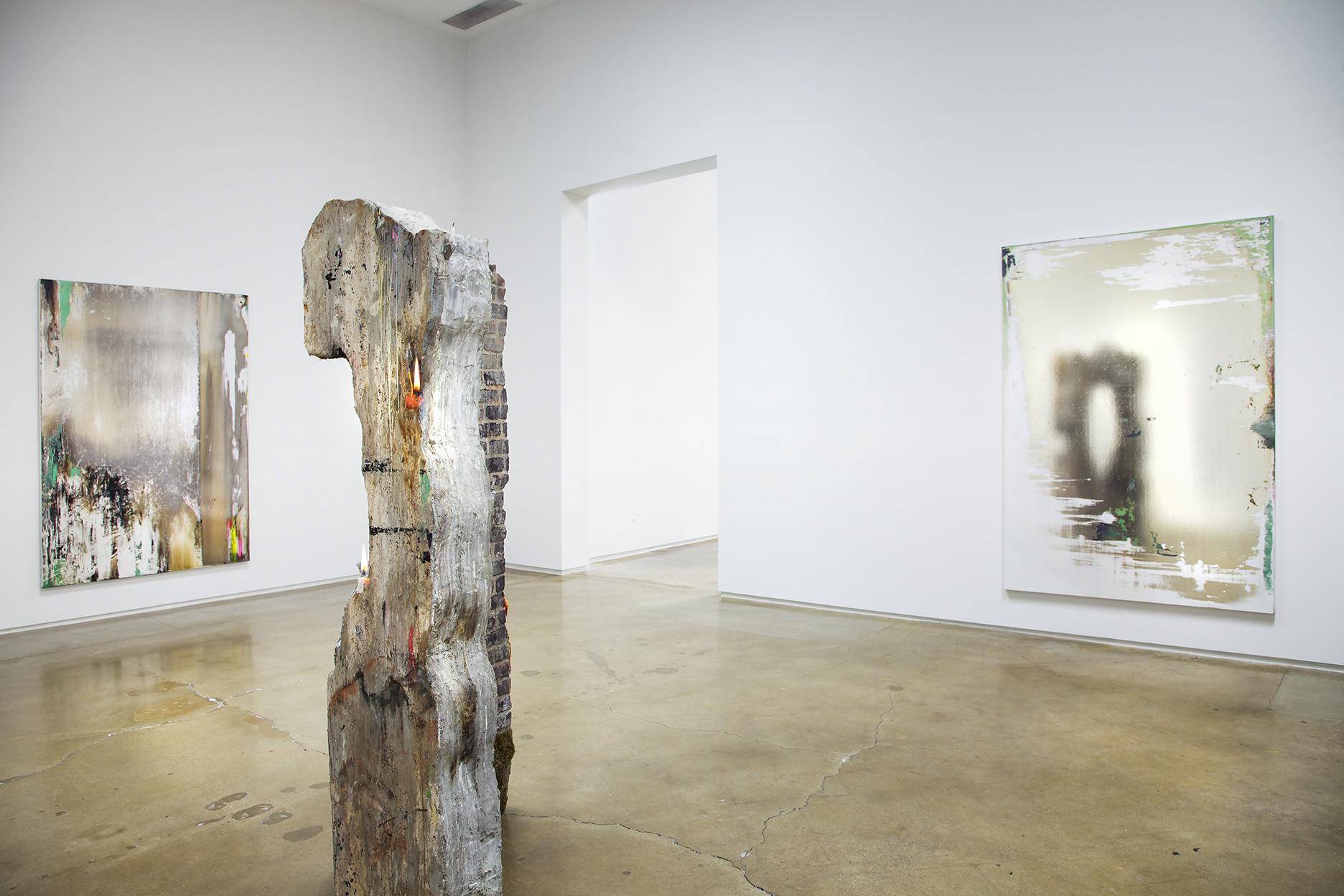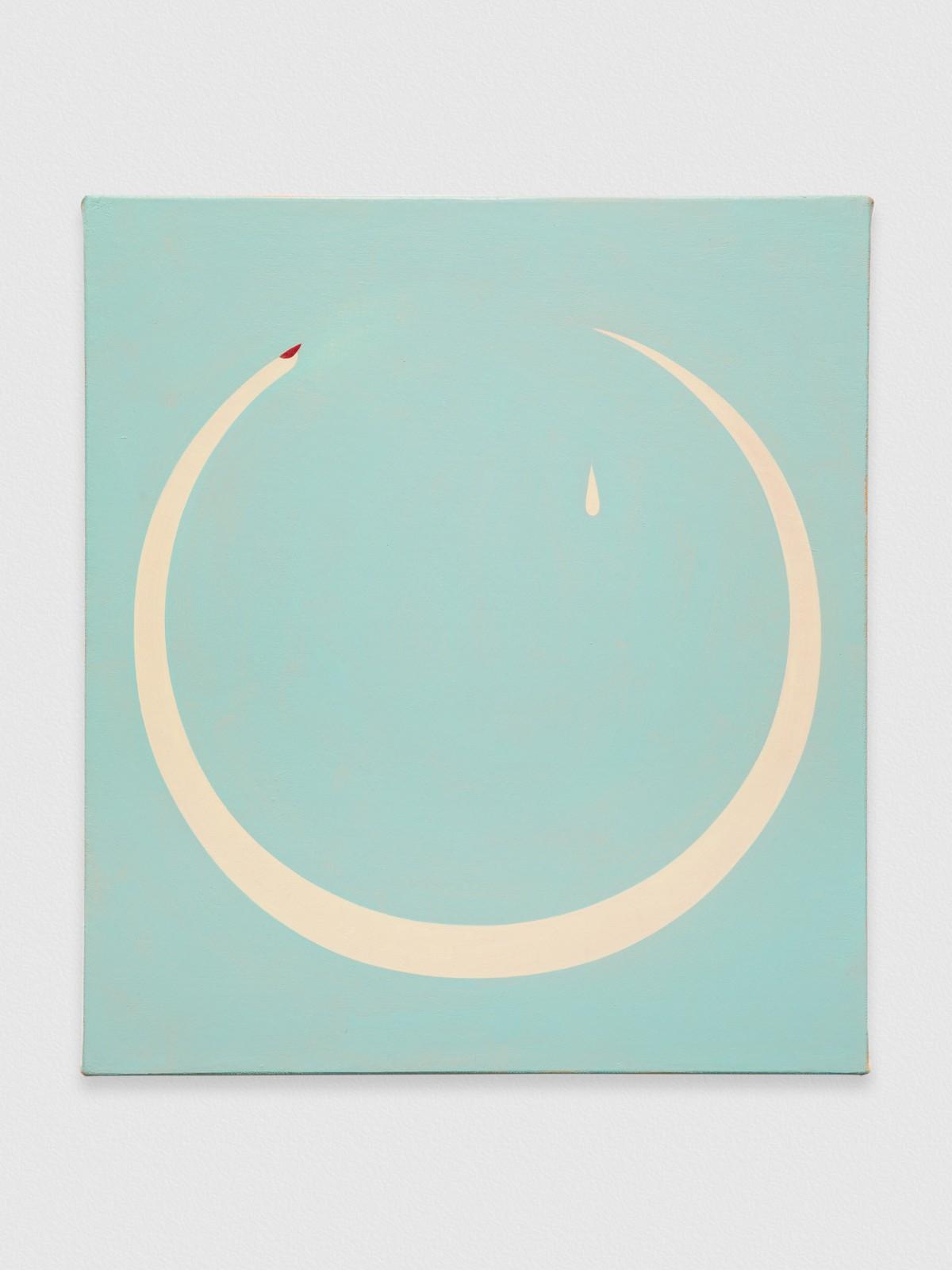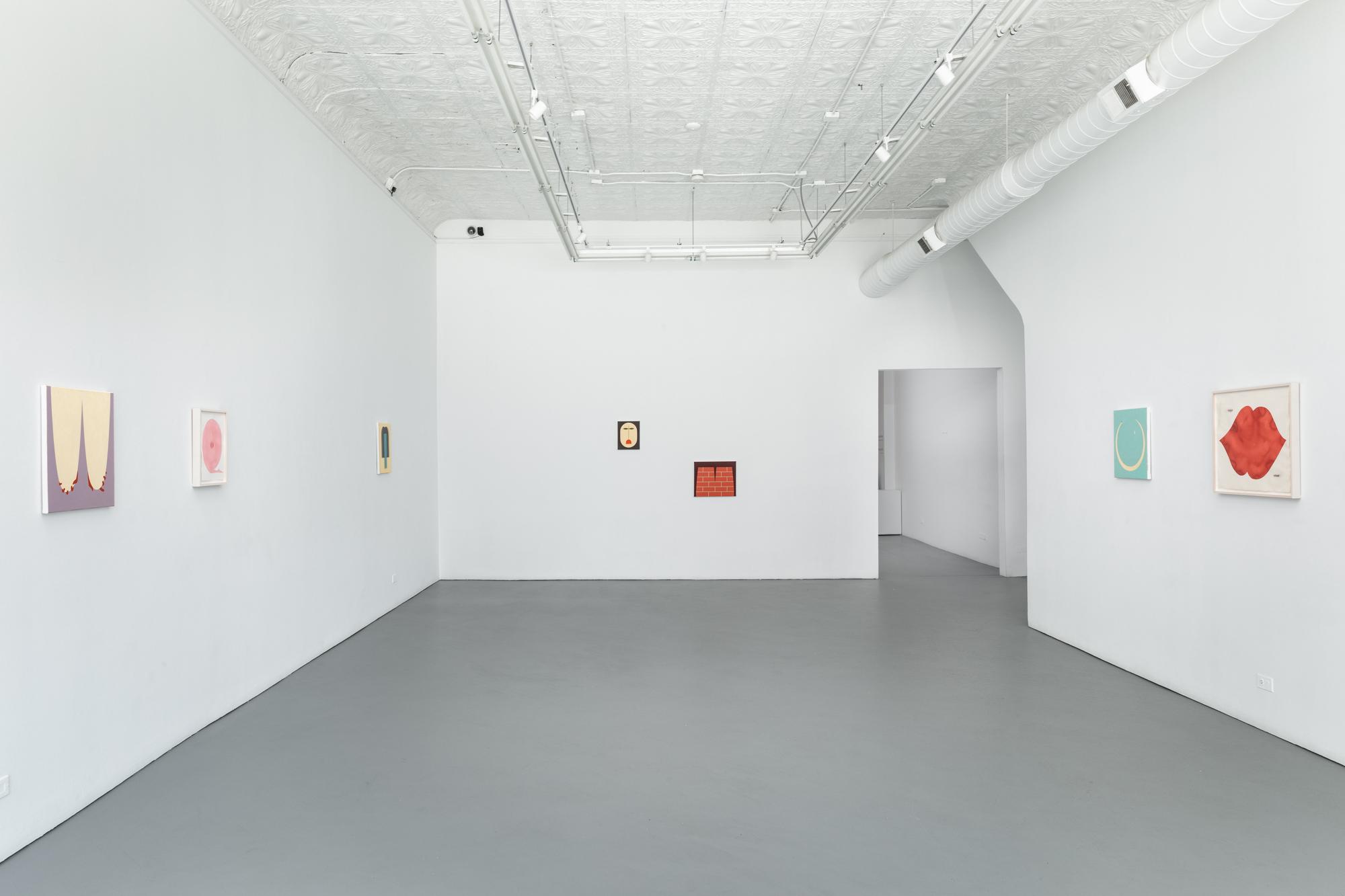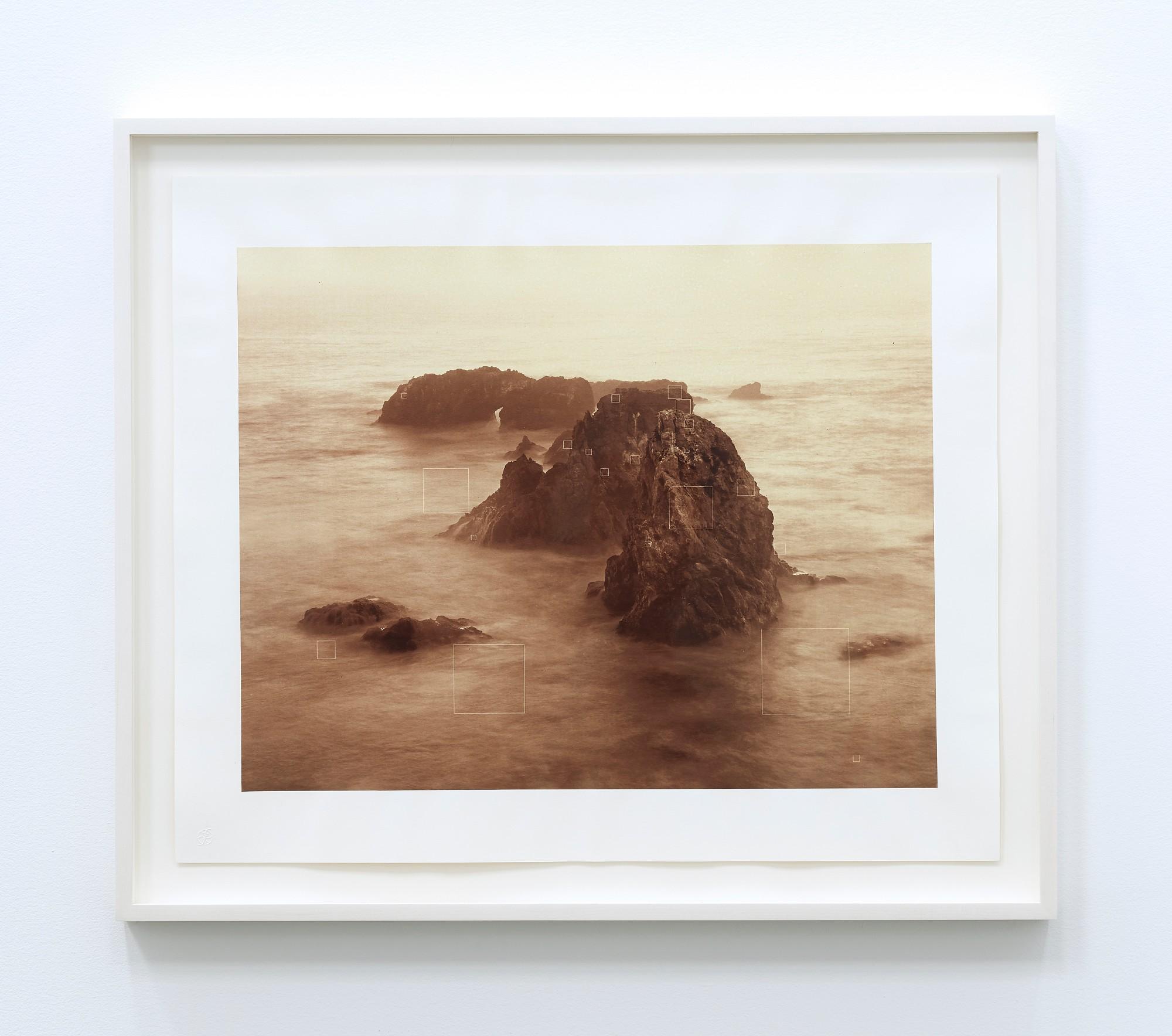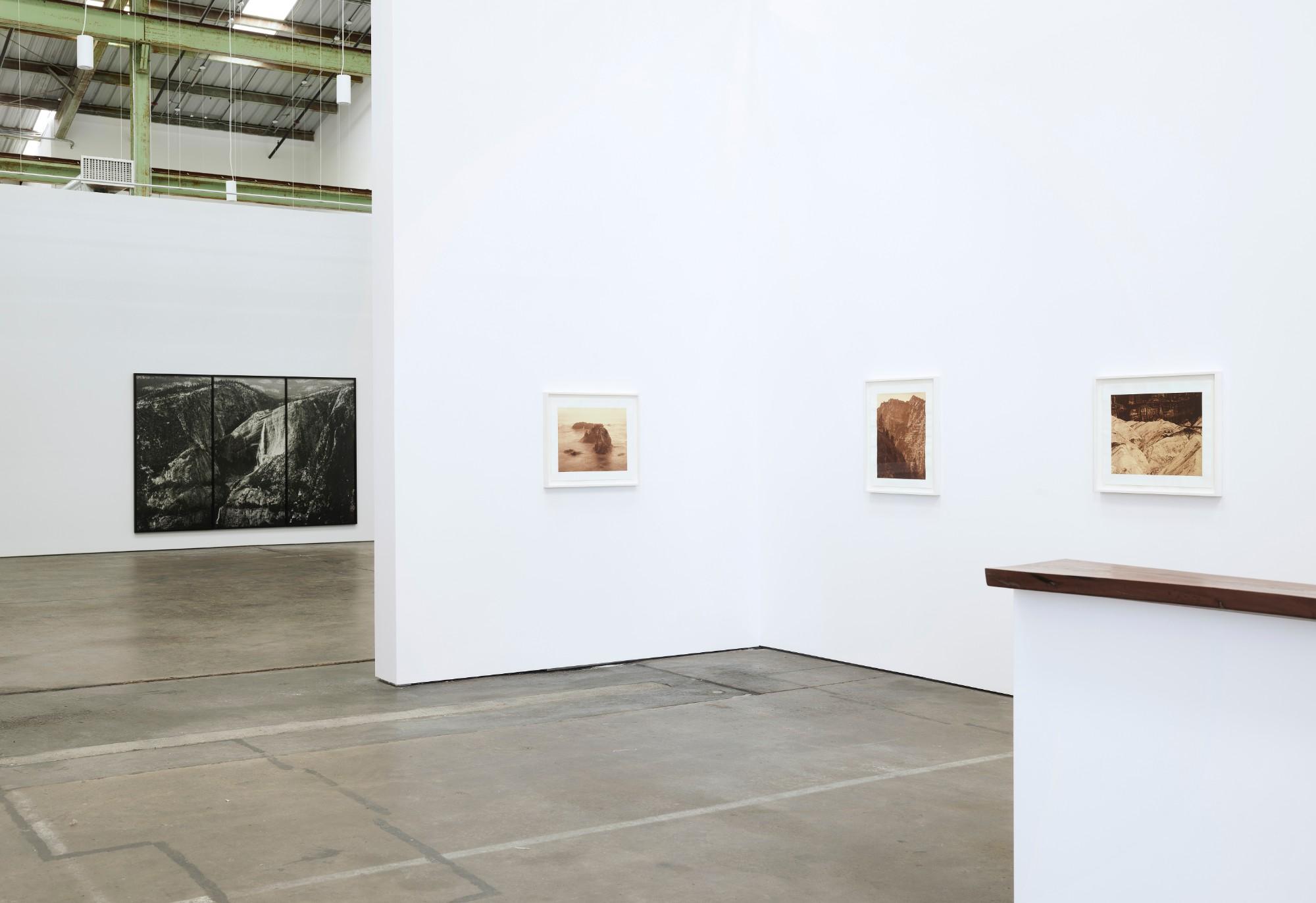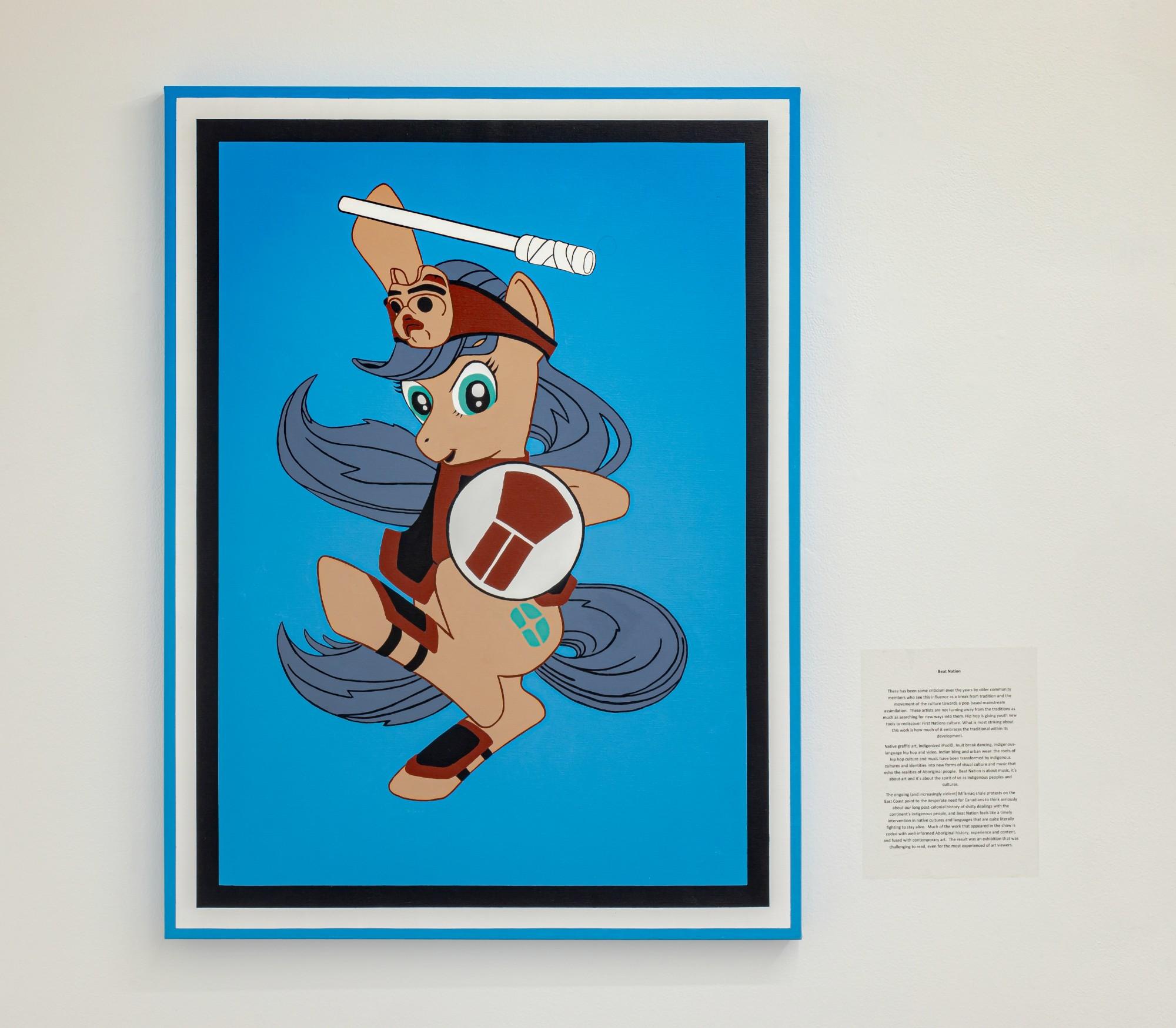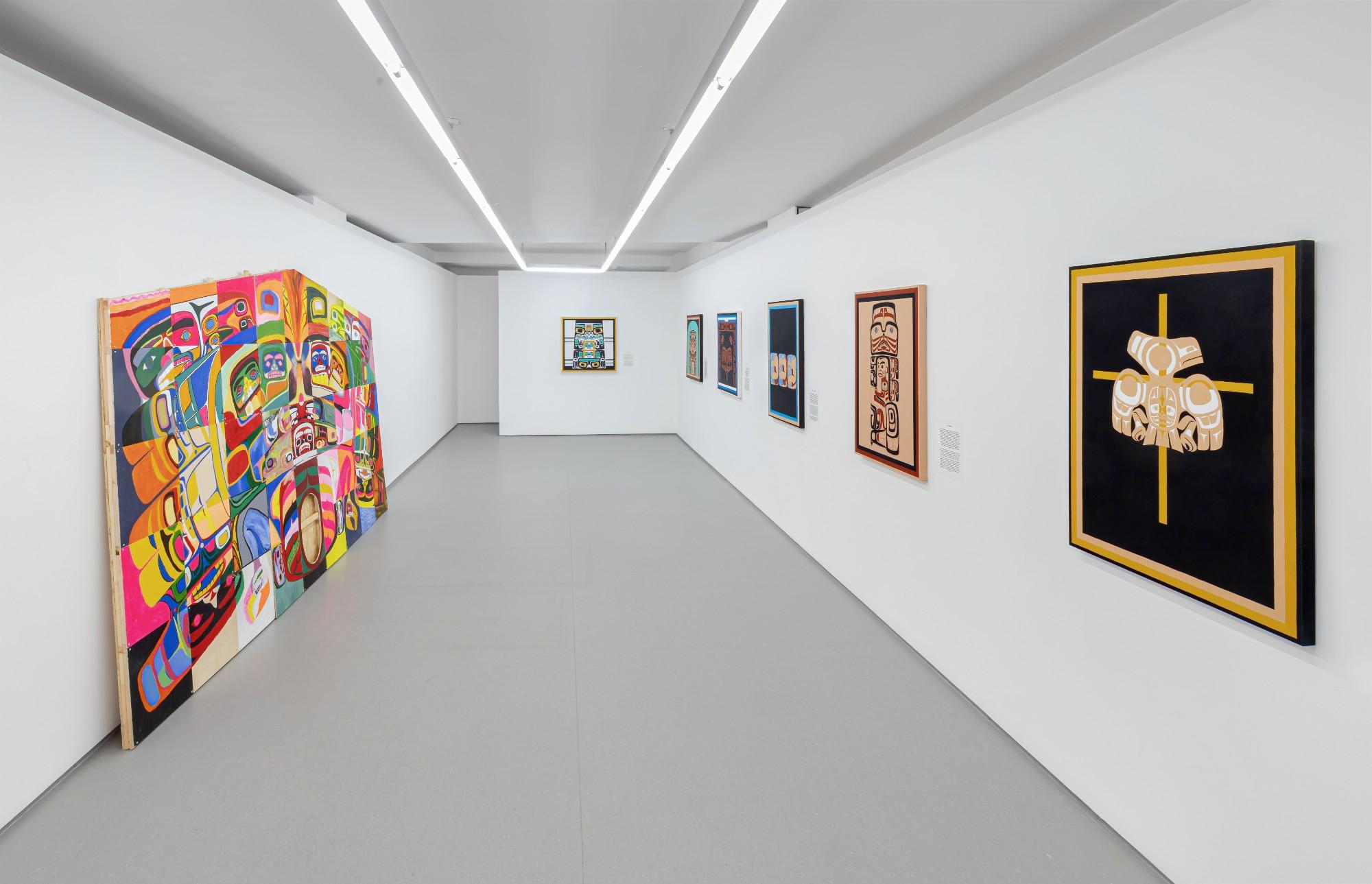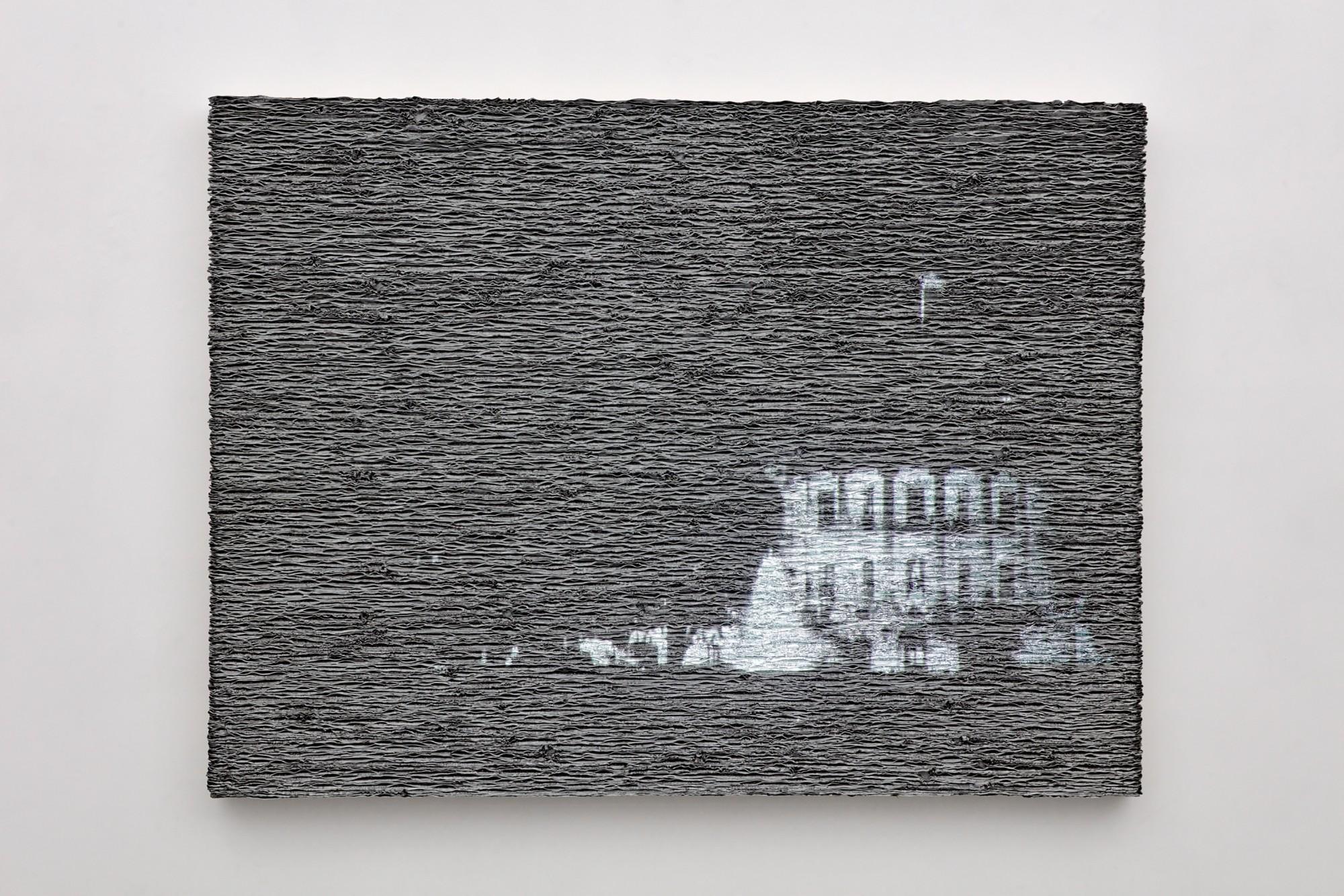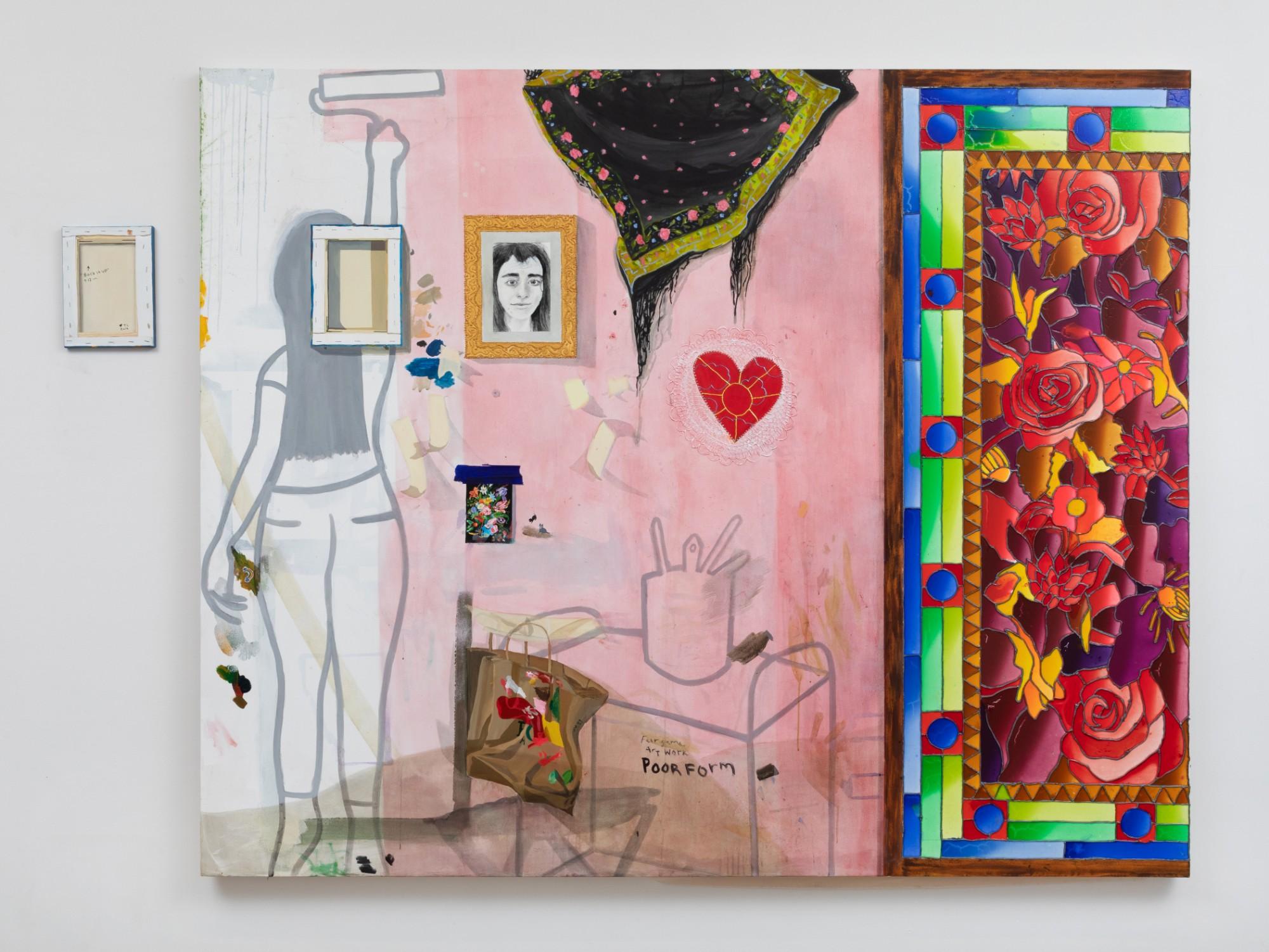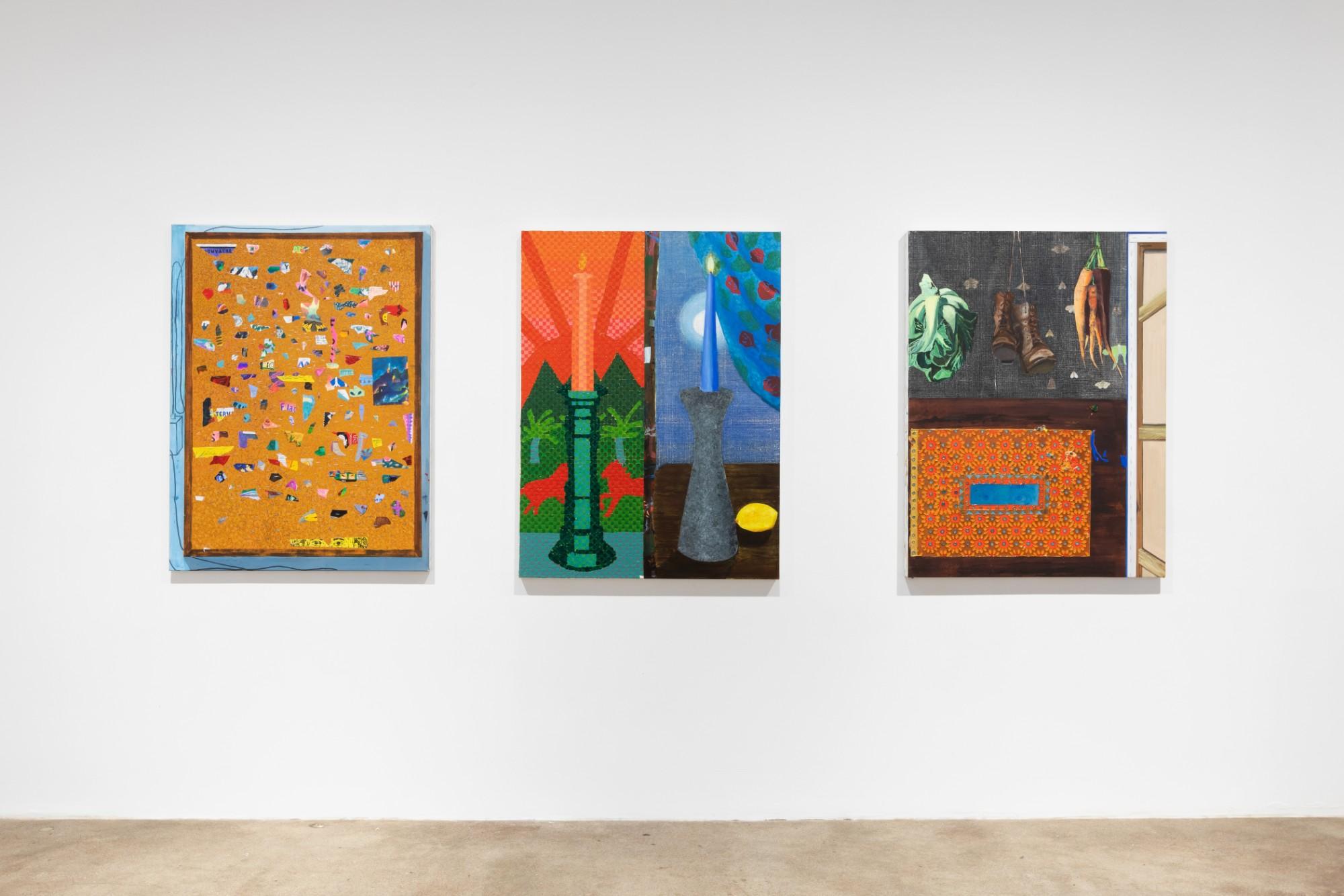Nir Hod: The Life We Left Behind
Kohn Gallery, Los Angeles
July 18 – August 30, 2020
An Israeli-born, New York-based artist inspired by a joyful mix of life and Pop Art, Nir Hod has made both figurative and abstract artworks over his twenty-five-year career, with his newest paintings and sculptures conceptually combining a bit of each way of working. Reflective paintings from the series The Life We Left Behind are completely nonrepresentational when viewed from afar, but as soon as viewers get close to the surfaces of the large-scale, chrome canvases, their mirrored images become part of the art in a haunting way. His fragmented sculptures, meanwhile, reflect the ruins of societies past, where man’s destructive nature ultimately won the day.
In paintings like The Life We Left Behind (7), which flaunts a background of gradated bands of purple, lavender, and pink, and The Life We Left Behind (4), which reveals the colors of a sun setting in a blue sky, the underpainting is exposed through a variety of deconstructive means. After abstractly painting the grounds, Hod and his team painstakingly apply a coat of chrome pigment, which he then brutally wipes and scrapes away. Initially inspired by Andy Warhol’s Shadow paintings yet poetically linked to the aging canvas in Oscar Wilde’s The Portrait of Dorian Gray, Hod’s reflective paintings sport their ruin while inviting one to contemplate his own likeness and impending mortality when being absorbed by them.




